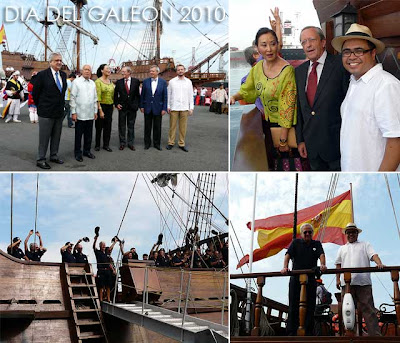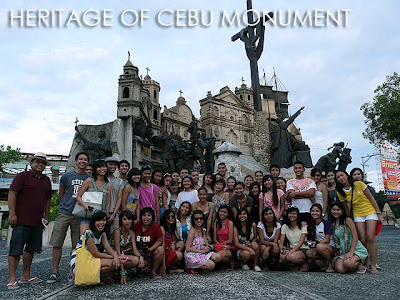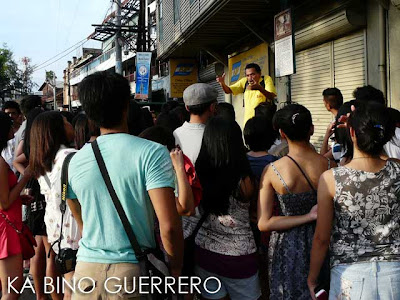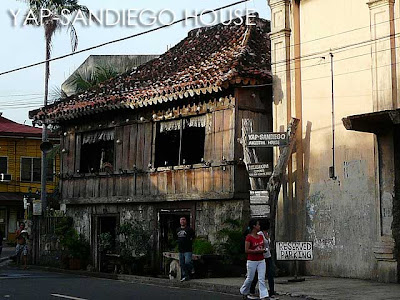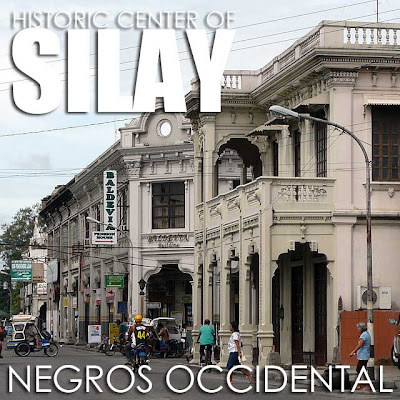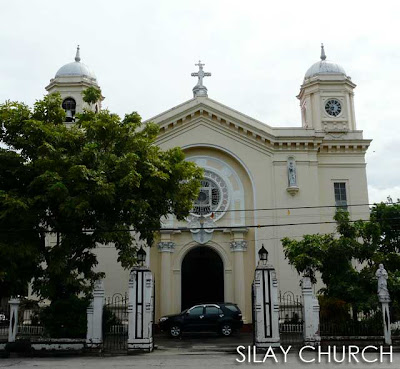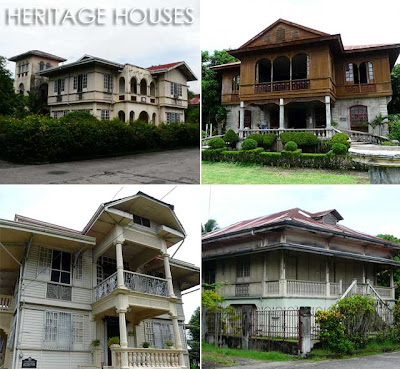
I found myself back in
Bantayan Island,
Cebu. Early in the semester, I asked my tourism students to vote on where they wanted to go for their
Out of Classroom Learning Activity (OCLA). And after a long deliberation, Bantayan Island edged out the competition. So with 45 students in tow, we trooped to Bantayan Island.
Arriving on the first flights, I had arranged for a private bus to fetch us at the
Mactan Cebu International Airport since we were a really big group. We first had a buffet breakfast at
Abuhan Tres for Php150 per head before making the three hour drive north to
Hagnaya Port, the jump-off point for Bantayan Island.

Unfortunately, despite being sunny, the seas were a bit rough that afternoon. But we managed to arrive in Bantayan Island in one piece. After checking-in at the
Santa Fe Beach Resort, we had lunch and some free time.

Since it was a tiring trip, I allowed the rest of the class to stay at the resort while those up to it joined me to Bantayan town to visit the centuries-old
Bantayan Church and what's left of its old houses. It's sad to see that just a little over a year after I last visited, at least two houses were now gone or in a state of disrepair, replaced by modern establishments which could have adaptively-reused the old structures. For more attractions around Bantayan, read
Bantayan Island, Cebu is rich in heritage and great beaches!

Back in Sta. Fe, more jeeps ferried the class to
D'Jungle where we enjoyed their sumptuous Php300 buffet. No doubt, everyone was happy!

The next morning, I made sure my students were up early since we were going to visit one of the smaller islands around Bantayan. Although the beach front of Sta. Fe Beach Club is already nice, others opt to visit
Virgin (Silion) Island or the other nearby islands such as
Hilantaga-an,
Jibitnil and
Guintacan for more beach options.
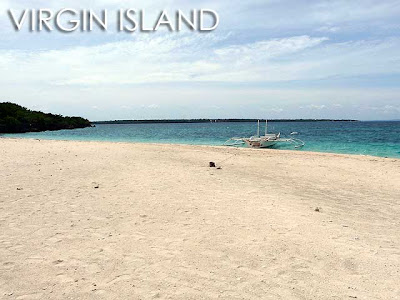

The boat ride should cost about Php1500. While there's a Php50 entrance fee for Virgin Island. But you can spend the whole day there and simply relax and enjoy the sun and sand. We didn't get to stay too long since we wanted to catch the ferry back to Hagnaya before lunch for us to reach Cebu City before sundown. We had a walking tour around the city's historic center scheduled.
So after five-minute showers at the resort, we rushed to the ferry for our trip back to Hagnaya. Fortunately, the waves were not as bad as the day before.
 Where to eat / restaurants in Bantayan Island
Where to eat / restaurants in Bantayan Island
Despite its relative seclusion, food is not a problem in Bantayan. In fact, it’s one of the island’s attractions. And most of the restaurants are owned by Europeans.
Highly-recommended is dinner at
D'Jungle, owned by Franco-German chef Robert Merbach, where they serve sumptuous buffets every Friday and Saturday. Any serious foodie will be in food heaven! Their buffet spread can have as much as fifty dishes which include a wide variety of seafood, meats and greens cooked in various styles. At Php300 per head which includes bottomless iced tea, how could you go wrong? It’s most definitely worth it to come back to Bantayan if only for this buffet.
Offering a similar buffet is the
Marisqueira O’ Portuguese Bar and Restaurant next door which competes with D ‘Jungle head on with its own weekend buffets and great Mediterranean food.
Other interesting restaurants include
Mabuhay Balikbayan Restaurant which serves great pizza, pasta, salads and seafood;
Blue Ice,
HR Restaurant and the
Floating Bar are all owned by Swedish nationals. Floating Bar which literally floats on water, serves great tacos and burritos. There's also
Coucou owned by a Belgian, and
Hard Kock Kafe. If you’re looking for food stalls,
Arjaymay serves great grilled seafood.
Where to stay / hotels and resorts in Bantayan Island
Here's a list of places to stay in Bantayan Island in alphabetical order:
Abaniko Beach Resort (0919) 2427622
Budyong Beach Resort (032) 4385700
Hard Kock Kafe ‘n’ Kottages (032) 4389075
Hoyohoy Villas (032) 4389223
Kota Beach Resort (032) 4389042
Marlin Beach Resort (0917) 3647027 / (032) 4389093
Ogtong Cave Resort (032) 4380165 / 4389129
St. Bernard Beach Resort (0917) 9636162 / (032) 4389833
Sta. Fe Beach Club (032) 4389090 / 4389107
Tristan’s Beach Resort (032) 4389041
Yooneek Beach Resort (032) 4389124

